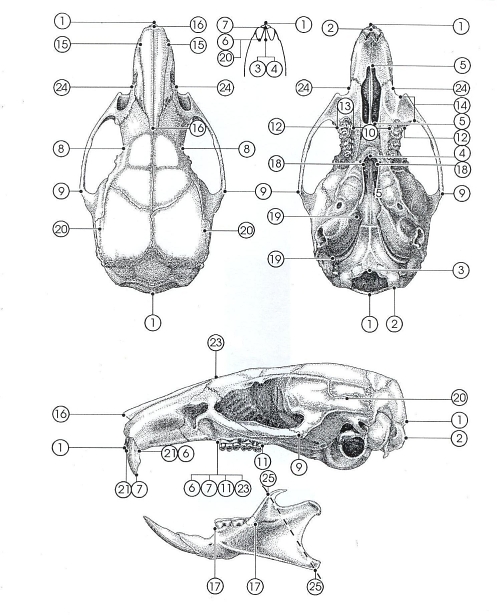Data
Content
The specimens available on the website represent the best documented portions of collections from the RMCA, the RBINS and the UAntwerpen. These are either the result from surveys in the Congo National Parks (then under Belgian colonial rule) or from more recent expeditions in the context of research programs funded by national and international funding bodies.
The website contains more than 100.000 specimens for which taxonomical, geographical, temporal (collection dates) and other basic information (such as collector, type-status,…) is provided. This information is also provided to GBIF. More detailed information is provided for a (more recent) part of the specimens, such as craniometrical measurements, sample information, ecological and genetic data (mitochondrial cytochrome b sequences), test results on the role of this mammals as vectors of diseases, etc. Most of the material was identified by either the collector or by colleagues who could provide a reliable identification.
For most of the species detailed information such as photos (of whole specimens or dissected skulls), original species descriptions and publications (of the research groups involved in this project) is available. Similar information is available for families and genera. Although we mention subspecies in the taxa lists, we use species as the basic taxonomic unit.
Measurements
There are two kinds of measurements. Skull measurements are taken on the skull of the specimen (see figure below) and are accurate to 0.01 mm. Other measurements are taken when the specimen was captured. HB and TL are accurate to 1 mm, HF and EL to 0.1 mm. You can download this legend as a  PDF file.
PDF file.
| Skull measurements | |
|---|---|
| M1 (GRLS) | greatest length of skull |
| M2 (PRCO) | condylobasal length |
| M3 (HEBA) | henselion-basion |
| M4 (HEPA) | henselion-palation |
| M5 (PAFL) | length of palatal incisive foramen (= palatal foramen) |
| M6 (DIA1) | length of diastema: distance between the anterior border of the alveolus of M1 and the posterior border of the alveolus of the upper incisor |
| M7 (DIA2) | distance between the anterior border of the alveolus of M1 and the foremost edge of the upper incisor |
| M8 (INTE) | smallest interorbital breadth |
| M9 (ZYGO) | zygomatic breadth on the zygomatic process of the squamosal |
| M10 (PALA) | smallest palatal breadth between first upper molars |
| M11 (UPTE) | length of upper cheek teeth: distance between the anterior border of the alveolus of M1 and the posterior border of the alveolus of M3 |
| M12 (UPDA) | breadth of upper dental arch: greatest breadth across first upper molars |
| M13 (M1BR) | greatest breadth of first upper molar |
| 14 (ZYPL) | smallest breadth of zygomatic plate: distance taken in a plane parallel to the occlusal surface of the upper molar-row |
| M15 (BNAS) | greatest breadth of nasals |
| M16 (LNAS) | greatest length of nasals |
| M17 (LOTE) | length of lower cheek teeth: distance between the anterior border of the alveolus of M1 and the posterior border of the alveolus of M3 |
| M18 (CHO) | greatest breadth of the choanae |
| M19 (BULL) | length of auditory bulla (the protruding part of the bony Eustachian tube) |
| M20 (BRCA) | greatest breadth of braincase |
| M21 (DINC) | depth of upper incisors (perpendicular on length axis of tooth) |
| M22 (-) | - |
| M23 (ROHE) | mediosagittal projection of rostrum heigth at anterior border of first upper molars |
| M24 (ROBR) | greatest rostrum breadth (in front of zygomatic plates) |
| M25 (PCPA) | distance between the extreme points of the coronoid and the angular processes of the mandibula |
| Other measurements | |
| HB | head and body length |
| TL | length of tail |
| HF | length of hind-foot (excluding the nail) |
| EL | length of ear |


